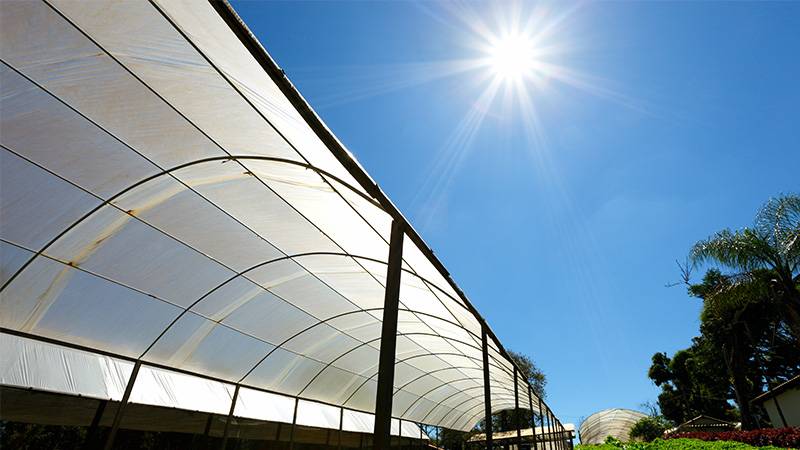Every gardener knows the thrill of stepping into a greenhouse, a world where plants flourish year-round. But as the sun blazes during the summer months, that once-perfect haven can quickly become a stifling chamber, so knowing how to cool a greenhouse becomes even more essential.
Maintaining the right temperature isn’t just about comfort; it’s crucial for the health and productivity of your cherished plants. As the mercury rises, understanding the mechanisms of greenhouse cooling becomes not just beneficial but essential.
Dive in with us as we explore the science, strategies, and secrets to master the art of greenhouse cooling.
10 Effective Ways to Cool a Greenhouse
1. Natural Ventilation
Greenhouses, by their nature, harness sunlight. However, with sunlight comes heat, and too much can be detrimental. This is where natural ventilation steps in.
Roof Vents: Whether they’re automated or manually operated, roof vents are a gardener’s best friend. Positioned at the highest point, they allow the naturally rising hot air to escape, creating a continuous flow of air. Advantages are plenty: energy efficiency, cost-effectiveness, and simplicity. However, they require regular checks to ensure they’re not jammed or blocked.
Side Vents: These are the unsung heroes, especially during gentle breezes. They allow cooler air to flow in, pushing the warmer air upwards and out through the roof vents. It’s a harmonious cycle when both are in play, but remember to secure them during gusty days to protect your plants.
2. Shading Methods
The sun’s intensity can be both a boon and a curse. Shading methods are all about balance, ensuring plants get just the right amount of light.
Shade Cloth: Coming in various weave densities, they dictate the percentage of sunlight reaching your plants. A denser cloth blocks more sun, perfect for scorching summer days. They’re easy to deploy and affordable. But choose carefully; too dense can hinder plant growth.
Greenhouse Paint: Think of it as sunblock for your greenhouse. Applied during the sunniest months, it reflects excess sunlight. The beauty? It washes off during the rainy season. It’s cost-effective but requires a steady hand for even application.
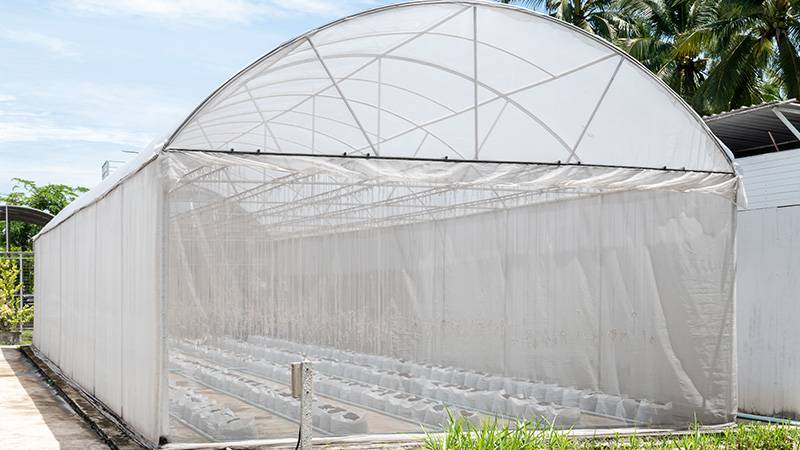
3. Evaporative Cooling
Harnessing the cooling magic of water evaporation, these methods are a delight during peak heat.
Wet Wall Systems: Picture this: water trickling down a wall, fans pulling air through it, and the result? A gust of cool air. These systems are efficient, especially for larger greenhouses. But they come with a price tag and need a reliable water source.
Misting Systems: Imagine standing amidst a fine, refreshing mist that doesn’t drench you. That’s what these systems do for plants, reducing temperature while ensuring they aren’t waterlogged.
4. Cooling Systems and Fans
Sometimes, Mother Nature needs a boost, especially when the air stands still.
Exhaust Fans: Positioned opposite intake vents, they pull out hot air, ensuring constant airflow. While they’re energy consumers, their efficiency in rapidly cooling large spaces is unmatched.
Circulation Fans: These don’t expel air; instead, they keep it moving, preventing the formation of hot or cold spots and ensuring an even temperature. They’re the silent workhorses, often overlooked but vital.
5. Ground and Water Cooling
Tapping into the earth’s stable temperatures or water’s heat-absorbing qualities offers innovative cooling.
Geothermal Systems: Tubes running underground circulate air. The earth cools this air, which is then reintroduced to the greenhouse. Initial installation can be costly, but the long-term energy savings are notable.
Water Walls: Similar to wet wall systems but on steroids. Walls with cascading water absorb and dissipate heat efficiently. They double up as a visual treat but require a good amount of water.
6. Reflective Mulches
These shiny ground covers are more than decorative. They reflect sunlight away, reducing ground heat. Perfect for seedbeds, they ensure young plants aren’t scorched from below.
7. Thermal Screens
Imagine a deployable blanket for your mini greenhouse. During the day, they reflect excessive heat, and at night, they trap warmth. Automated versions can adjust based on sunlight, making them a smart investment.
8. Double Glazing
It’s not just for homes. Double-paned glass or plastic drastically reduces heat entry, providing an insulating air gap. While pricier than traditional panels, the energy savings and consistent temperatures they offer make them worth it.
9. Cooling with Plants
Nature cooling nature, poetic, isn’t it?
Vertical Gardening: Climbing plants like ivy or passionflower provide natural shade when trained on walls or trellises. Plus, they add a touch of beauty.
Strategically Positioned Plants: Think of large or bushy plants as the umbrellas of the plant world. Positioned right, they can cast gentle shadows, protecting more delicate neighbors.
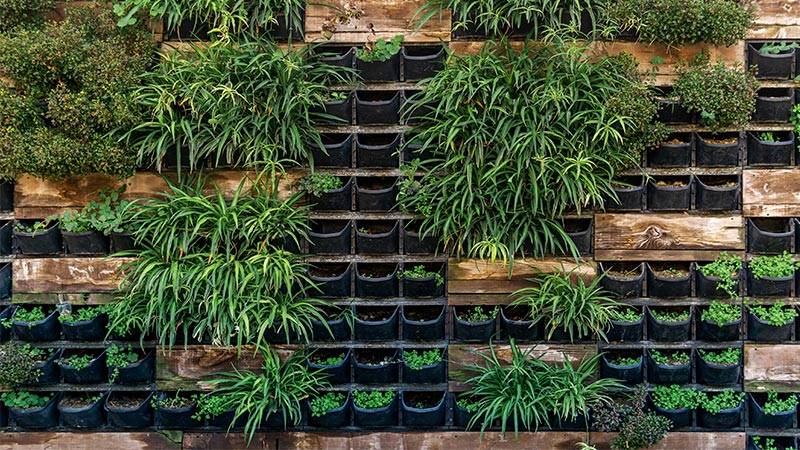
10. Thermal Mass
Storing heat during the day to release it at night, these are the long-term planners of the cooling world.
Water Barrels: Positioned around the greenhouse, they absorb daytime heat, releasing it slowly at night. It’s an age-old method, simple yet effective.
Stone or Brick Paths: Walking on them during a hot day, you can feel the heat. They absorb it and release it slowly, acting as natural temperature regulators.
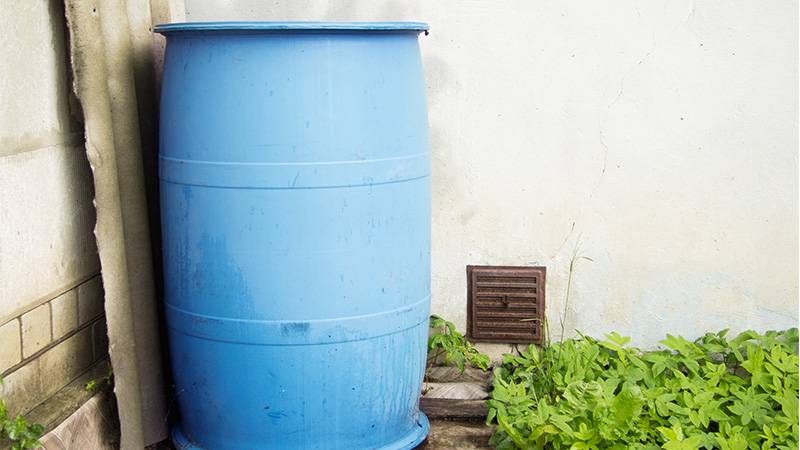
Incorporating these methods ensures your greenhouse remains a sanctuary for plants, even during the hottest days. Remember, every greenhouse is unique, so tweak and test to find the perfect cooling combo for yours!

Read More:
Why Summer Cooling is Crucial
Ah, summer! While we relish its sunny days and warm breezes, for our greenhouse plants, it can spell trouble if left unchecked. Why is summer cooling so pivotal?
Firstly, overheating is a genuine threat. Beyond the wilting and sunburn, prolonged heat can disrupt cellular processes, stunt growth, and even trigger early bolting in some veggies, causing them to seed prematurely. Furthermore, excessive heat compromises the plant’s immune response, making them susceptible to pests and diseases.
However, maintaining optimum summer temperatures isn’t just about damage control. It’s also about opportunity. A well-cooled greenhouse in summer ensures that plants not only survive but thrive. It encourages better fruiting in crops like tomatoes, enhances the vibrancy in flowers, and ensures the overall well-being of your green world.
In essence, summer cooling isn’t merely a preventive measure—it’s a gateway to unlocking your garden’s full potential.
The Science Behind Greenhouse Heat
Have you ever wondered why your car feels like an oven after sitting in the sun? Or why coastal cities remain warm even when the sun sets? It all comes down to the science of trapped heat. Now, magnify that phenomenon, and you have a greenhouse. Understanding this is crucial in mastering the art of keeping it cool.
A greenhouse, by design, is meant to trap heat. It achieves this by utilizing the greenhouse effect—not to be confused with the global phenomenon of the same name. Here’s how it works: Sunlight enters the greenhouse, mostly as visible light, and warms up the plants and soil inside.
These objects, now warmed, emit infrared radiation. But here’s the catch: the greenhouse’s glass or plastic panels trap this infrared radiation.
While these panels allow sunlight in, they prevent the infrared radiation from easily escaping. This trapped radiation warms the air inside the greenhouse, creating a cozy microclimate for your plants.
This self-regulated environment is what allows gardeners to grow tropical plants in snowy regions or protect plants from winter’s chill with a winter greenhouse. However, during hot days, this heat-trapping capability can become a challenge, hence the importance of knowing how to cool a greenhouse effectively.
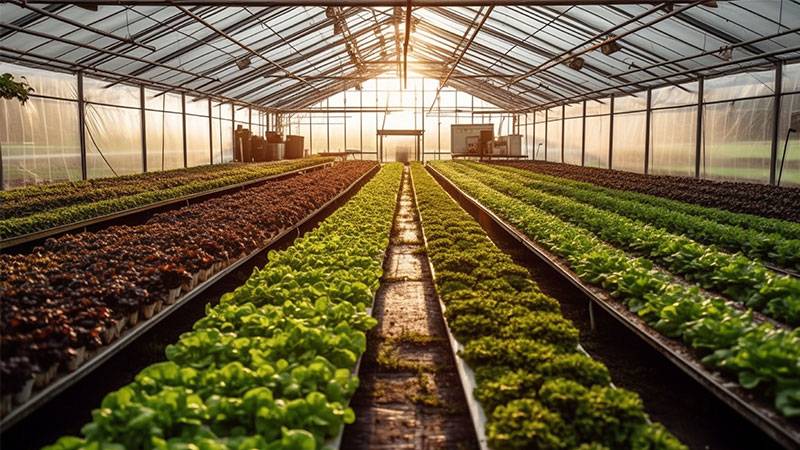
What Temperature Is Too High for a Greenhouse?
We often picture greenhouses as warm sanctuaries for our beloved plants. But just as with everything in life, too much of a good thing can become problematic. So, what’s the tipping point for greenhouse temperatures?
When the mercury starts creeping above 90°F (32°C), warning bells should ring. Extended exposure to these temperatures can cause heat stress for plants, leading to wilting, sunburn, or even stunted growth. For some delicate plants, such as lettuce or spinach, the threshold might be even lower.
Understanding these temperature thresholds is essential, as each plant has its comfort zone. And while the joy of a greenhouse is to push boundaries, ensuring our plants aren’t cooking is key to a thriving garden.
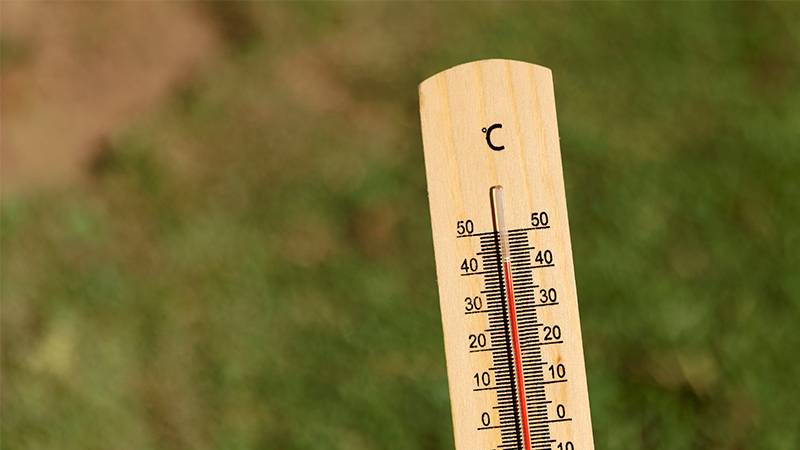
The Ideal Greenhouse Temperature
Every gardener dreams of a blooming greenhouse, and hitting that temperature sweet spot is the secret sauce behind it. So, what’s the magic number?
Well, the truth is, it varies. While a general range of 70°F to 85°F (21°C to 29°C) is the gold standard for many plants, specific needs can differ. For instance, tomatoes thrive at 65°F to 75°F (18°C to 24°C) during the day but prefer slightly cooler nights. In contrast, tropical orchids might enjoy basking in the higher end of the spectrum.
Cool-season crops like broccoli and peas yearn for cooler conditions, thriving between 50°F to 70°F (10°C to 21°C). Meanwhile, heat-loving peppers and cucumbers might push for the warmth of 75°F to 85°F (24°C to 29°C).
The crux? Know your plants. While a greenhouse offers a controlled environment, understanding individual temperature preferences is the real key to unlocking lush, vibrant growth.
5 Tips for Monitoring Greenhouse Temperature
Monitoring your greenhouse temperature might seem straightforward—just check the thermometer, right? Well, while the basic principle is simple, there’s a bit more nuance involved for those aiming to create an optimum plant paradise. Here are some top tips to ensure you’re getting accurate, helpful readings:
1. Position Matters
Don’t just hang your thermometer at the entrance. Ensure it’s placed at plant height in a central location to get a representative reading of where your plants live.
2. Use Multiple Devices
Consider having several thermometers or digital sensors spaced throughout larger greenhouses. Different spots can have varying microclimates.
3. Digital Advantage
Modern digital thermometers can offer advanced features like min/max temperature logging and alerts for when temperatures go beyond set ranges.
4. Calibrate Regularly
Just like clocks can go off time, thermometers can drift from accuracy. Ensure you’re calibrating or checking them periodically.
5. Stay Informed Remotely
Invest in remote monitoring systems that sync with your smartphone or computer. This way, you’re always in the loop, even if you’re not physically in the greenhouse.
By staying on top of your greenhouse’s temperature, you’ll be better equipped to make informed decisions, ensuring your plants remain in a conducive environment for growth and vitality.
8 Common Mistakes to Avoid
When it comes to greenhouse gardening, sometimes what we don’t do is just as important as what we do. Overzealous or misguided actions can often lead to counterproductive results. Let’s navigate through some common cooling pitfalls to ensure you’re on the right path:
1. Over-Ventilating
While ventilation is crucial, too much can dry out plants or introduce pests. Find a balance.
2. Ignoring Humidity
Cooling isn’t just about temperature. Ignoring the humidity can lead to plant diseases or reduced growth.
3. Using Just One Cooling Method
Relying solely on shade cloths or fans might not be enough during peak heat. Combine methods for best results.
4. Forgetting Nighttime
Sometimes, the greenhouse can remain hot at night. Ensure it’s cooling down adequately after sunset.
5. Neglecting Maintenance
Dirty shade cloths or clogged misting systems can drastically reduce their efficacy.
6. Assuming All Plants are Equal
Not every plant has the same temperature tolerance. Ensure your cooling efforts match the needs of the specific plants you’re growing.
7. Over-watering as a Cooling Method
While plants need more water in the heat, over-watering in the name of cooling can lead to root rot.

8. Lacking Regular Monitoring
A greenhouse’s climate can change rapidly. Not regularly checking can mean missing crucial adjustments.
Steering clear of these common mistakes can set you on a path to a more fruitful and enjoyable greenhouse experience.
Conclusion
In the vibrant world of greenhouse gardening, temperature is more than just a number—it’s a silent symphony guiding the dance of growth. Proper cooling is instrumental, ensuring our green companions flourish in the best environment possible.
But remember, the learning never stops. As seasons change and as we introduce new plants to our collection, so too must our approaches adapt. Keep nurturing your knowledge, stay attuned to your greenhouse’s whispers, and let every leaf and bloom be a testament to your dedicated care. Here’s to cooler days, thriving plants, and the joy of a garden in perfect harmony.
